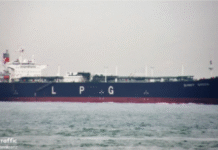Bangladesh’s gross domestic product (GDP) growth has declined to 6.3 per cent in the current fiscal (2011-12) due to political turmoil and periodic strikes, widespread electricity shortage, near double-digit inflation, fiscal deficit, and deteriorating external balance, said the WB’s Global Economic Prospect (GEP) 2012 report.
The GEP, released Tuesday across the globe, also said: “Bangladesh’s GDP growth is estimated to have slowed to 6.3 per cent in the 2011-12 fiscal year, ending in June, from 6.7 per cent in the 2010-11 fiscal.”
Describing the reasons behind the economic slowdown the WB report said exports have been affected by weaker demand from the key European trade partners, while infrastructure constraints, especially electricity shortage, have become acute, in part due to high crude oil prices.
“A short-term reliance on oil-powered rental power plants to boost generation capacity as well as mounting loss of the state-owned Bangladesh Petroleum Corporation due to low administered fuel prices have resulted in a subsidy burden of more than 3.0 per cent of the GDP,” the GEP said.
“The off-budget financing of the state-owned electricity companies has contributed to fiscal woes and increased non-performing loans of banks.”
Monetary tightening and easing of food inflation are likely to create a downward impact on overall inflation. Non-food inflation, however, remains persistently high partly due to still high cost of imported inputs and pressures from higher government spending, it said.
“Migrant remittances have remained resilient, increasing 11 per cent on a year-on-year basis in the first 11 months of the 2011-12 fiscal to $11.8 billion, but reserves have been under pressure due to the high crude oil import bill.”
The Washington-based lender has, however, forecasted that Bangladesh’s GDP growth is expected to pick up to 6.5 per cent by the fiscal 2013-14.
The WB also said the Pakistani rupee and Bangladeshi taka have been facing depreciation pressures since mid-2011, with a relatively sharp depreciation of the taka in December during the Eurozone debt crisis. The taka, however, appears to have stabilised since this February.
According to the GEP report, remittance inflow in nominal dollar terms in 2011 increased by 27 per cent, 25 per cent and 17 per cent in Pakistan, Sri Lanka and Nepal respectively, while flow to Bangladesh grew at a relatively slower pace of 10 per cent.
The GEP report, however, forecasted higher growth in other South Asian countries, saying India’s GDP growth in the next fiscal (2012-13) will reach 6.9 per cent from the previous fiscal’s 6.8 per cent.
Besides, Pakistan’s GDP will grow to 3.8 per cent from 3.6 per cent estimated in the FY12. Nepal’s GDP growth will slow down to 4.1 per cent from the current fiscal’s 4.2 per cent.
The GEP report also said the global GDP is projected to increase at the rate of 2.5 per cent in 2012, with growth accelerating to 3.0 per cent and 3.3 per cent in 2013 and 2014 respectively.
The GDP of the developing countries is expected to expand by 6.0 per cent, both in 2013 and 2014, somewhat slower than the 6.3 per cent pace during the first seven years of this century, it said.
The GDP growth in South Asia slowed to 7.1 per cent in 2011 from 8.6 per cent in 2010, as headwinds from the Eurozone crisis caused a deceleration in exports and a reversal of portfolio capital.









